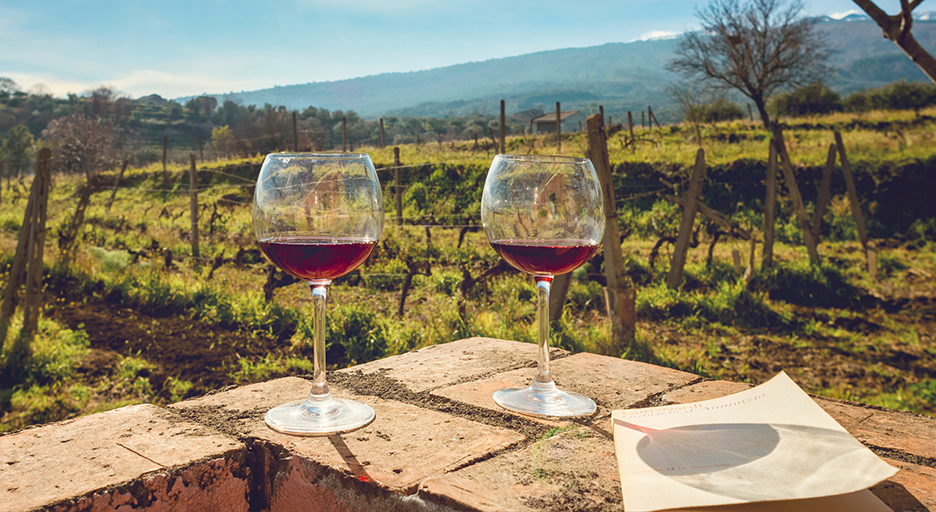
“Carni fa carni, pani fa panza, vinu fa danza.”
Meat builds muscle, bread builds the belly, and wine makes you dance.
Grapes tend to thrive in climates with long warm summers and mild, rainy winters, in regions with well-draining, nutrient rich soil and plenty of sunlight. It’s no wonder then that Sicily has been making wine since about 4000 BC. The island’s Mediterranean climate is perfect for producing the high-quality grapes that put Sicily on the viticultural map.
But where to start? If you’re traveling to Sicily (or just aspiring to) and want to improve your wine literacy before you go, read on for a bit about the wines in this unique corner of the world.
- Over 30% of Sicily’s vineyards are organic. The island’s arid conditions and salty sea breezes reduce the likelihood of rot and mildew, making Sicily a haven for organic farming.
- Sicily’s three key red grapes are Nero d’Avola, Frappato and Nerello Mascalese.
- Nero d’Avola’s flavor profile includes traces of black cherry, plum, licorice, and chili pepper, and is perfect if you’re a fan of full-bodied dry reds like Cabernet Sauvignon and Syrah.
- Frappato is a dry but fruitier variety with notes of sweet berries and incense spice.
- Nerello Mascalese (pronounced nair-rello mask-ah-lay-zay) is a light-bodied red primarily grown in the volcanic soil around Mount Etna, producing notes of cinnamon and floral herbs. If you like pinot noir, this one’s for you.
- White wine varieties make up about 64% of vineyard plantings in Sicily. If you’re a white wine sipper, here are three to know:
- Grillo (gree-lo) is a light, dry white with hints of citrus and thyme. Think of it as pinot grigio’s fuller, cooler cousin.
- Catarratto is another dry, light-bodied white, this time with notes of apple, peach, and dried flowers.
- Inzolia (sometimes Insolia, Ansolia) was introduced to Sicily by the ancient Greeks. This dry white has flavor characteristics of citrus, flowers, and ripe fruit.
- Sicily is home to the iconic Marsala, a fortified wine made from white grapes, known to most as a cooking wine. With hints of vanilla, apricot, and tamarind, this very sweet wine is akin to a sherry and can also be sipped as a dessert or aperitif.
- Know your regions. Like many wine-producing countries, Italy has a labeling system that makes it easier for consumers to understand what they’re buying. Of Sicily’s 24 wine-producing regions, Sicily has one that carries the DOGC classification (the highest quality level), and 23 that carry the DOC (the second highest). These can be broken up into four main geographical areas:
- Cerasuolo di Vittoria DOCG – lower elevation and higher temperatures contribute to this world-class red-wine producing region.
- Sicilia DOC – an island-wide appellation launched to promote Sicilian wines abroad.
- Etna DOC – known for its unique climate and volcanic soil.
- Marsala DOC – named for the city of Marsala in Sicily’s northwest corner and known for its famous fortified wine.
- Yes, grapes can grow on the side of a volcano. Sicily’s Mount Etna is Europe’s largest and most active volcano, and the mineral-rich soils surrounding it are responsible for some of the wine region’s most explosive flavors.
Ready to book your trip? Raise your glass with Collette on one of our tours of Sicily!

